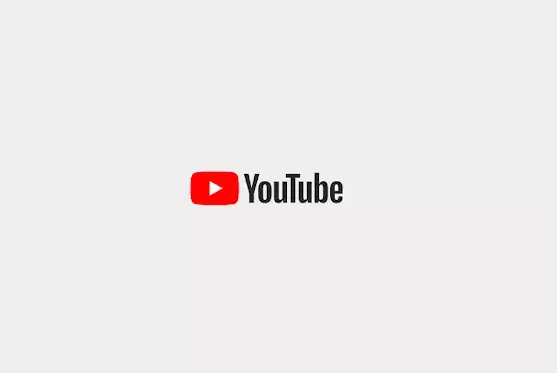YouTube has historically positioned itself as a platform that balances content freedom with brand safety. Its policies around profanity, violence, and other sensitive topics have often swung like a pendulum—initially restrictive, then somewhat lenient, and now, surprisingly, more accommodating. The recent update to its Advertiser Friendly Guidelines marks a significant turning point, signaling a recognition of the importance of creator expression without sacrificing monetization potential. This change not only reflects a strategic shift but also a clear acknowledgement of the realities content creators face—particularly gaming streamers and entertainment channels that naturally incorporate language and themes that may have once been strictly prohibited.
Rather than enacting an outright liberalization of all content, YouTube’s latest move is a nuanced compromise. Allowing strong profanity within the first seven seconds of a video without jeopardizing full monetization represents an appreciation of how the digital landscape has evolved. Creators now enjoy greater freedom to set the tone early on, which is critical for engagement. The previous rule, which restricted monetization if such language appeared in those crucial initial seconds, often hampered authentic storytelling and dynamic content presentation. This update injects a new level of flexibility into the platform’s policy framework, emphasizing that advertiser trust can be maintained even with initial language strength, provided overall content remains aligned with broader brand safety expectations.
Reconsidering Monetization Strategies in the Context of Audience Engagement
The rigidity around early profanity has long posed a challenge for creators striving to craft compelling narratives and authentic interactions. The earlier restrictions sometimes forced creators to omit impactful language or to manipulate their opening moments to appease the rules—tactics that often diluted the authenticity and energy viewers crave. YouTube’s revised guidelines recognize that entertainment content, especially in vibrant communities like gaming, thrives on genuine expression. By removing the monetization penalty for early strong language, the platform is effectively endorsing a more realistic approach to content creation.
Critically, this shift underscores an understanding that viewers are increasingly desensitized to profanity, and in many cases, language is a tool for humor, emphasis, or emotional honesty. The earlier approach—penalizing or demonetizing videos for initial language—was arguably out of step with contemporary digital consumption patterns. Creators are now empowered to communicate more naturally, which can lead to richer engagement and more authentic connections with their audiences. Monetization is crucial for many content creators, and this policy revision is a welcome move that aligns revenue opportunities with modern creative practices.
Underlying Implications for Advertisers and Platform Governance
While the move appears to favor creators, the underlying rationale hinges on advertiser flexibility and control. YouTube’s decision to allow strong profanity in the early seconds, while safeguarding monetization, is rooted in the platform’s confidence in expanded placement controls. Advertisers can now target content based on their own comfort levels regarding language and themes. This means brands can choose environments that resonate with their values without the blanket restrictions that once limited the diversity of content available.
However, the updated guidelines also come with boundaries. YouTube emphasizes that moderate or strong profanity in titles or thumbnails will still result in limited monetization. Moreover, frequent or pervasive use of strong language will continue to attract restrictions. This measured approach suggests that the platform is not forsaking its responsibility to maintain brand safety but rather adapting to the realities of modern content creation. It’s a delicate balancing act—trusting the discernment of advertisers and creators alike, while still trying to uphold a certain standard of appropriateness.
By revising its policies, YouTube hints at a more mature, nuanced understanding of the content ecosystem it hosts. Creators are being trusted to self-regulate in a way that benefits both their growth and advertiser interests. This evolution signifies a platform moving toward a more flexible, inclusive future—one where authentic expression is no longer the enemy of profitability but can coexist with sustainable monetization strategies.
A New Era of Creative Freedom and Platform Maturity
In essence, YouTube’s updated guidelines represent not just a policy tweak but a philosophical shift. It’s a recognition that content creators need more autonomy to produce videos that resonate authentically with their communities. The platform’s willingness to relax restrictions signals confidence in its ability to monitor content effectively and uphold standards without overly constraining creators’ expression.
This move could set a precedent for other digital platforms to reconsider their own moderation policies. It challenges the conventional wisdom that strict content rules invariably lead to better brand safety and cleaner content. Instead, it advocates for a more sophisticated model—one where contextual nuance, advertiser preferences, and creator authenticity form the new trifecta of platform governance.
Ultimately, this change empowers creators, providing them a stronger foundation to produce lively, unfiltered content that still attracts valuable advertising dollars. As viewers gravitate toward more genuine, spirited content, YouTube’s adaptability shows a strategic commitment to remaining relevant and supportive of its vibrant creator community. This evolution may very well redefine the boundaries of acceptable content, fostering a culture where honest expression is met not with suppression, but with smarter, more flexible moderation.

